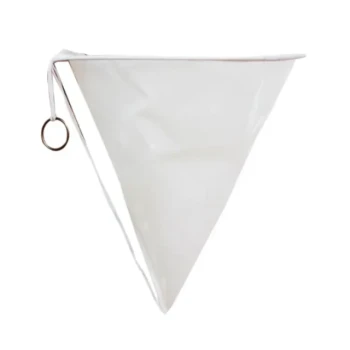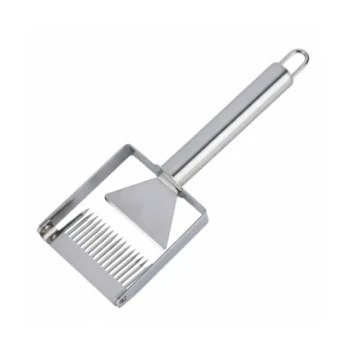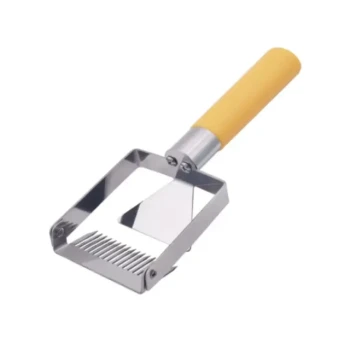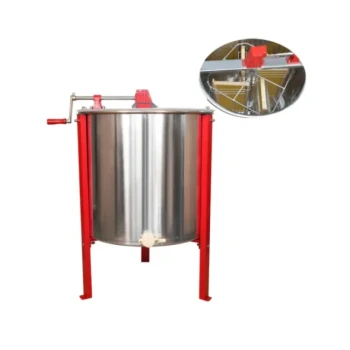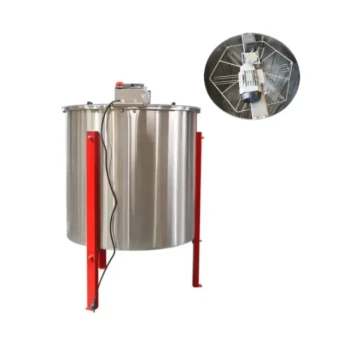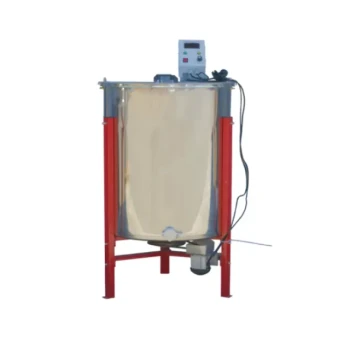Yes, you can absolutely store honey in 5-gallon buckets, but with one critical requirement: they must be food-grade. For many beekeepers, these buckets are the standard, cost-effective solution for handling the large volumes of honey produced during a harvest. The key is not the size or shape of the container, but the material it is made from.
The safety and quality of your stored honey depend entirely on the container's material. While 5-gallon buckets are practical for large quantities, using a non-food-grade plastic bucket can contaminate your honey and ruin your entire harvest.
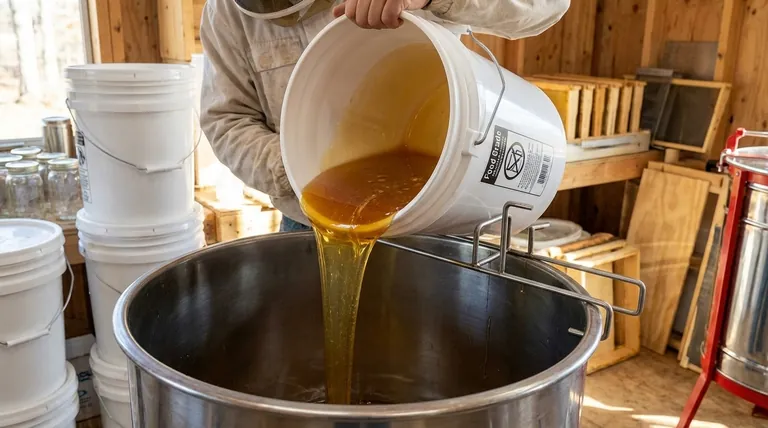
The Critical Factor: Food-Grade Materials
The term "food-grade" is not a suggestion; it is a fundamental requirement for safety. Understanding what this means is the difference between preserving your honey and spoiling it.
What "Food-Grade" Actually Means
A container is designated "food-grade" when its material is proven safe for direct contact with food. This means no harmful chemicals will leach from the plastic into the contents.
Most food-grade buckets are made from High-Density Polyethylene (HDPE), often indicated by the #2 recycling symbol. This plastic is stable, durable, and does not transfer unwanted tastes or chemicals.
Why Standard Buckets Are Unsafe
General-purpose buckets from a hardware store are often made from plastics not intended for food. They may contain dyes, recycled plastics of unknown origin, and chemical release agents that are unsafe for consumption.
Honey is slightly acidic, which can accelerate the process of leaching chemicals from a non-food-safe plastic into the honey itself, creating a health risk.
How to Identify the Right Bucket
Always look for a clear marking on the bucket. You will typically find "Food Grade," "Food Safe," or an international symbol of a cup and fork, which certifies it for food contact. Do not assume a bucket is safe if it lacks these markings.
Understanding the Trade-offs: Buckets vs. Other Containers
While food-grade buckets are the go-to for bulk storage, it's important to understand their place alongside other options.
The Case for Buckets: Bulk & Efficiency
For beekeepers extracting many gallons at once, 5-gallon buckets are unmatched. They are lightweight, durable, stackable, and provide the most efficient way to handle and temporarily store a large harvest before it's bottled.
The Advantage of Glass: Long-Term Purity
As your reference notes, glass jars are considered the ideal container for long-term storage. Glass is completely inert, meaning it is non-porous and will never leach chemicals or absorb odors. For archiving honey or storing it for years, glass is the superior choice.
The Risk of Metal Containers
You should avoid most metal containers for storing honey. The natural acids in honey can react with and corrode certain metals, which not only imparts a metallic taste but can also contaminate the honey. The only exception is stainless steel, which is commonly used in professional processing equipment.
Making the Right Storage Choice
Your storage strategy should align with your specific goal.
- If your primary focus is processing a large harvest: Food-grade 5-gallon buckets with airtight, gasketed lids are the industry standard for efficient and safe temporary storage.
- If your primary focus is long-term preservation and quality: Transfer the honey from your bulk bucket into smaller, airtight glass jars for the best protection against oxidation and environmental changes.
- If you are considering a used bucket: Be extremely cautious and only use one that you know previously held a food product and has been thoroughly cleaned and sanitized.
Ultimately, choosing the right container is the final, critical step in honoring the hard work that went into producing your honey.
Summary Table:
| Storage Container | Best For | Key Considerations |
|---|---|---|
| Food-Grade HDPE Bucket | Bulk Harvest Processing | Must be marked "Food-Grade"; cost-effective and stackable. |
| Glass Jar | Long-Term Storage & Quality | Inert material; ideal for preserving flavor and purity. |
| Stainless Steel | Professional Processing | Acid-resistant; safe for large-scale operations. |
| Non-Food-Grade Plastic | Not Recommended | Risk of chemical leaching; can contaminate honey. |
Protect Your Harvest with Professional-Grade Supplies
As a beekeeper, the quality of your honey depends on the quality of your equipment. HONESTBEE specializes in supplying durable, reliable beekeeping supplies and equipment to commercial apiaries and distributors. We understand the demands of a large-scale harvest and provide wholesale-focused solutions you can trust.
Let us help you streamline your operation with equipment that safeguards your product.
Contact HONESTBEE today to discuss your wholesale supply needs and ensure your honey is stored safely and efficiently.
Visual Guide
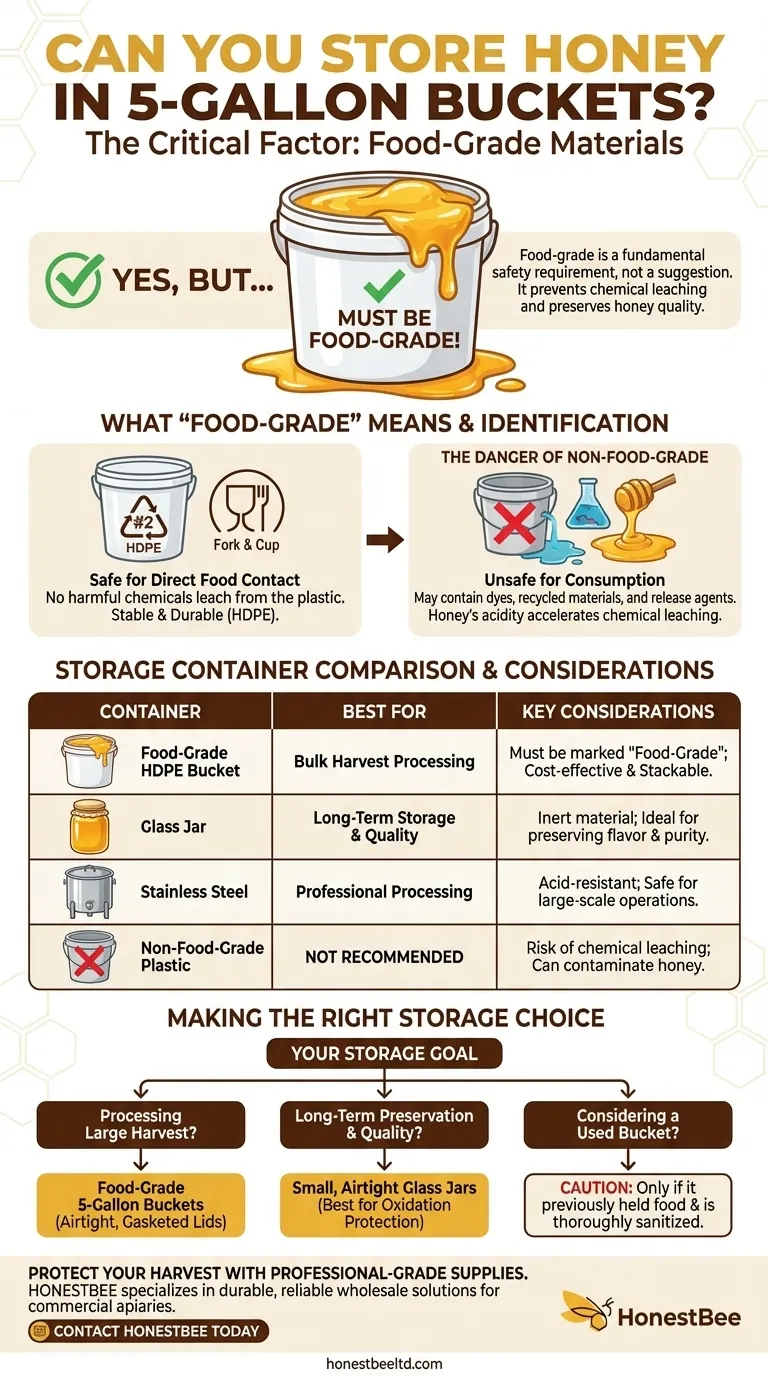
Related Products
- Stainless Steel Pail Perch Bucket Bench
- Inverted Squeezable Honey Jar with No Drip Flip Top Cap for Easy Pouring
- Professional Cone-Shaped Honey Filter with Reinforced Steel Ring
- Stainless Steel Triangle Support Honey Strainer and Filters
- Honey Concentrating and Filtering Dehumidifier Machine 2T Capacity for Honey
People Also Ask
- How does higher moisture levels affect microbial growth in honey? It's the primary cause of fermentation and spoilage.
- Why is quality processing equipment important in honey production? Ensure Purity, Efficiency, and Brand Reputation
- What can make honey runny? The Science of Sugar, Water, and Temperature
- What qualities are important for someone starting in beekeeping? Build a Thriving Apiary with the Right Mindset
- What is a honey pail? The Essential Container for Protecting Your Honey's Value


